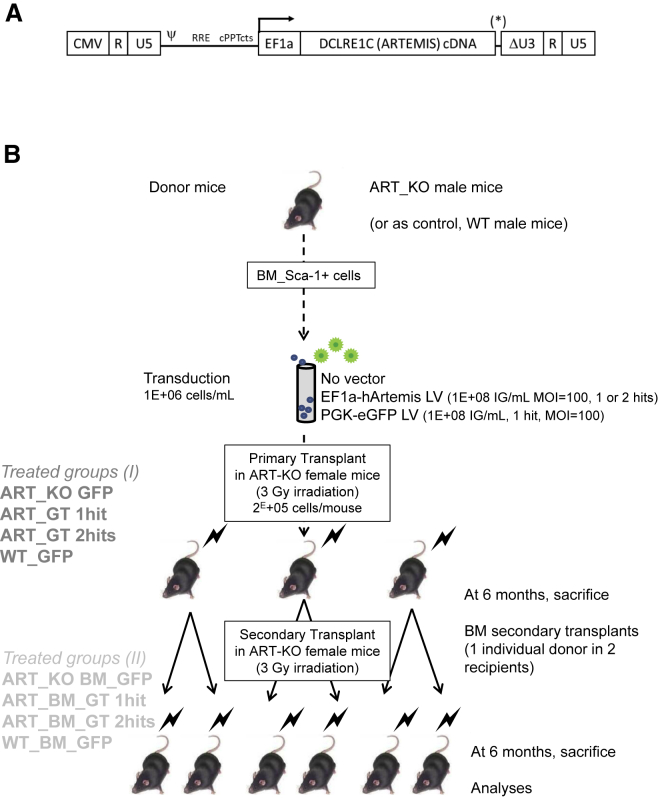Genetic deficiency of the nuclease DCLRE1C/Artemis causes radiosensitive extreme mixed immunodeficiency (RS-SCID) with lack of peripheral T and B cells and elevated sensitivity to ionizing radiations.
Gene remedy primarily based on transplanting autologous gene-modified hematopoietic stem cells might considerably enhance the well being of sufferers with RS-SCID by correcting their immune system.
A lentiviral vector expressing physiological ranges of human ARTEMIS mRNA from an EF1a promoter with out post-transcriptional regulation was developed as a secure clinically relevant candidate for RS-SCID gene remedy. The vector was purified in GMP-comparable circumstances and was not poisonous in vitro or in vivo. Long-term engraftment of vector-transduced hematopoietic cells was achieved in irradiated Artemis-deficient mice following major and secondary transplantation (6 months every).
Vector-treated mice displayed T and B lymphopoiesis and polyclonal T cells, had structured lymphoid tissues, and produced immunoglobulins. Benign indicators of irritation had been famous following secondary transplants, possible a characteristic of the mannequin. There was no proof of transgene toxicity and no induction of hematopoietic malignancy.
In vitro, the vector had low genotoxic potential on murine hematopoietic progenitor cells utilizing an immortalization assay. Altogether, these preclinical information present security and efficacy, and help additional growth of the vector for the gene remedy of RS-SCID.

Constitutively energetic Artemis nuclease acknowledges constructions containing single-stranded DNA configurations.
The Artemis nuclease acknowledges and endonucleolytically cleaves at single-stranded to double-stranded DNA (ss/dsDNA) boundaries. It can also be a key enzyme in the non-homologous finish becoming a member of (NHEJ) DNA double-strand break restore pathway. Previously, a truncated type, Artemis-413, was developed that’s constitutively energetic each in vitro and in vivo.
Here, we use this constitutively energetic type of Artemis to detect DNA constructions with ss/dsDNA boundaries that come up below topological stress. Topoisomerases stop irregular ranges of torsional stress by means of modulation of constructive and detrimental supercoiling. We present that overexpression of Artemis-413 in yeast cells carrying genetic mutations that ablate topoisomerase exercise have an elevated frequency of DNA double-strand breaks (DSBs). Based on the biochemical exercise of Artemis, this implies a rise in ss/dsDNA-containing constructions upon elevated torsional stress, with DSBs arising because of Artemis slicing at these ss/dsDNA constructions. Camptothecin targets topoisomerase IB (Top1), and cells handled with camptothecin present elevated DSBs.
We discover that expression of Artemis-413 in camptothecin-treated cells results in a discount in DSBs, the reverse of what we discover with topoisomerase genetic mutations. This distinction between outcomes not solely confirms that topoisomerase mutation and topoisomerase poisoning have distinct results on cells, but in addition demonstrates the usefulness of Artemis-413 to check modifications in DNA construction.
